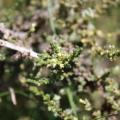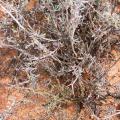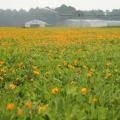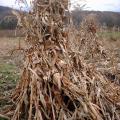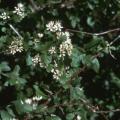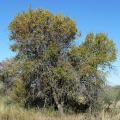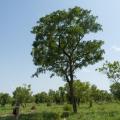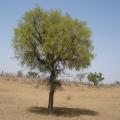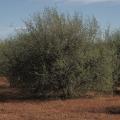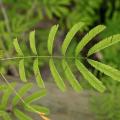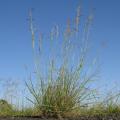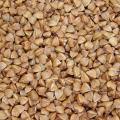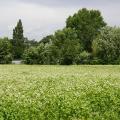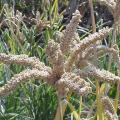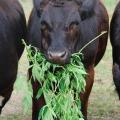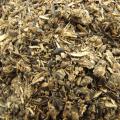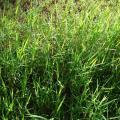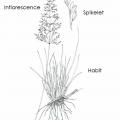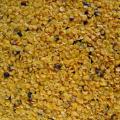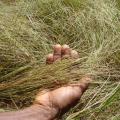Feedipedia news
After 13 years, it is time for the website to be upgraded! Before we start, we need your input.
Explore Feedipedia
|
Salsola glabrescens Burtt Davy is an indigenous shrub native of the Nama Karoo,... Read more |
Osteospermum spinescens is a shrub native to the South African semi-arid veld... Read more |
Rhizoma peanut (Arachis glabrata Benth.) is a summer growing perennial tropical... Read more |
|
Maize stover consists of the residues of maize (Zea mays L.) plants grown for... Read more |
Combretum aculeatum Vent. is a small tree or shrub up to 4 m high. It has... Read more |
Red bush willow (Combretum apiculatum Sond.) is a deciduous, small to medium-... Read more |
|
Barwood (Pterocarpus erinaceus Poir.) is a tropical tree from West and Central... Read more |
Prosopis cineraria (L.) Druce is a deep-rooted, perennial and multipurpose tree... Read more |
Huizache (Acacia farnesiana (L.) Willd. or Vachellia farnesiana (L.)... Read more |
|
The acacia species Senegalia brevispica (Harms) Seigler & Ebinger (formerly... Read more |
Common thatching grass (Hyparrhenia hirta (L.) Stapf. is a tufted, strongly... Read more |
Buckwheat (Fagopyrum esculentum Moench) is an erect annual herb grown worldwide... Read more |
|
Buckwheat (Fagopyrum esculentum Moench) is an erect annual herb grown worldwide... Read more |
Finger millet (Eleusine coracana (L.) Gaertn.) is a cereal grass grown mostly... Read more |
Hemp (Cannabis sativa L.) is an annual erect herb up to 3 m (or more) tall. It... Read more |
|
Sunflower meal is the by-product of the extraction of oil from sunflower seeds. In terms... Read more |
Big-leaf bristle grass (Setaria megaphylla (Steud) Dur. & Schinz.) is a... Read more |
The African couch grass (Digitaria abyssinica (Hochst. ex A. Rich.) Stapf) is a... Read more |
|
Sporobolus marginatus Hochst. ex A. Rich. is a tufted, stoloniferous perennial (... Read more |
Rapeseed hulls - called canola hulls in North America and other countries - are the... Read more |
Fonio (Digitaria exilis Stapf) is an annual tropical grass grown in West Africa... Read more |
Pages
Recent resources
 Opinion paper: Phasing out of the aid provided to the livestock sector during expectedly recurrent emergencies
- Makkar, 2024. animal
Opinion paper: Phasing out of the aid provided to the livestock sector during expectedly recurrent emergencies
- Makkar, 2024. animal
Open access opinion paper that makes a case that the emergency aid do more harm than good to African countries. It is valid for all the fields of agriculture but has direct consequence for animal agriculture. The context here is the aid provided during emergencies that are foreseeable recurrent.
The role of livestock in food security, poverty reduction and wealth creation in West Africa
- Molina-Flores et al., 2020. Food and Agriculture Organization of the United Nations Accra, 2020
Livestock is key to 377 million people in West Africa and in some countries, up to 60% of the population is involved in livestock production. The demand for animal products is increasing with population growth, urbanization, growing middle class, and due to shifting consumer preferences towards animal products. To meet this growing demand, countries in West Africa must engage in accelerated sustainable livestock production undertaking. Livestock development is key to eradicate hunger and poverty. This book attempts to provide up-to-date, and reliable information on the potentials, opportunities, and challenges of the livestock subsector in West Africa.
Pulses and their by-products as animal feed
- Sherasia et al., 2017. In: Calles, T.; Makkar, H. P. S. (Eds), FAO, Food and Agriculture Organization of the United Nations, Rome, Italy
This document provides a state-of-the-art review of the recent research (published and unpublished) on the use of pulses and their by-products as animal feed. It aims at raising awareness on the use of pulses and their by-products. It highlights the nutritional role of pulses and pulse by-products as animal feed and is a contribution to the legacy of the 2016 International Year of Pulses. This document will further enhance the use of these feed resources in other continents, besides Asia, where many pulse by-products are simply dumped. It is also expected that the synthesis presented contributes to make the use of pulses and their by-products as animal feed more efficient. This document will be useful for extension workers, researchers, feed industry, policy-makers and donors alike.











